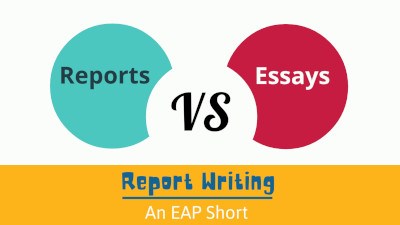Show AWL words on this page.
Show sorted lists of these words.


 







|
 Podcast is loading. Problems? Too slow? You can also access the Podcast by
clicking here.
Podcast is loading. Problems? Too slow? You can also access the Podcast by
clicking here.This message will disappear when then podcast has fully loaded.
On this page you will find some language for reports. The language provides further examples of the formulaic language used in academic contexts. As with other formulaic language (e.g. the language for presentations), you do not need to learn all of these phrases. You should be able to use at least one phrase for each function (e.g. stating the aim(s) of your report, referring to figures in the Results section or the Discussion section). How many more you learn after this is up to you. Good writing requires varying the expressions you use, rather than using the same ones all the time. On the other hand, you will only state the aim once in a report, so one phrase may be enough for life!
Preliminaries
The title of your report will depend very much on the subject matter, and will be very individual. Nonetheless, there are some useful verbs and phrases which can be used in titles, especially for science reports. These include:
- Investigating X
- Calculating X
- Measuring X
- Demonstrating X
- Analysing X
- Determining X
- An Investigation into X
- A Demonstration of X
- An Analysis of X
There is no special language for writing abstracts or contents pages, which are the other components of the prilimaries of a report.
Introduction
Background
You may need to talk about something in general in the background section of your introduction. The most common way is to use [No article] + [plural]. For example:
- Mobile phones have become very popular in China in recent years.
It is also possible to use [The] + [singular]. For example:
- The mobile phone has become very popular in China in recent years.
The background section of your introduction is likely to require in-text citations. Some structures for citations are given below. For more, see the references and citations section.
| According to X (2000, p.115) ... | ||
| As X (2000, p.115) | states/points out/suggests | , ... |
| X (2000, p.115) | that... | |
| X (2000, p.115) | defines Y as ... | |
| ... | (X, 2000, p.115). | |
Theory
You may need to give definitions and classify in this section. See the relevant pages on the website for language for definitions and classification.
If you want to refer to theories or principles, you can use the following structures.
| As stated by | Newton's First Law, ... |
| According to | |
| Newton's First law | states that... |
The following structures can be used for presenting equations.
| The equation for Z is... | (where X is ... and Y is ...) |
| The equation of Z can be written... | |
| The Z equation can be given as ... | |
| The following equation of Z can be obtained: ... |
The following phrases can be used for stating what something stands for or represents.
- X stands for/represents/denotes/symbolizes Y
- Y is represented by X
- Y is denoted by X
- Y is symbolized by X
- ...where X is/stands for/denotes/represents Y
Aims
This part of the report explains why you are writing the report. The tense you use will depend on whether the subject of the sentence is the report (which still exists) or the experiment (which has finished). If you are referring to the report, you should use present tense. If you are referring to the experiment, which has finished, you should use past tense.
| The aim/purpose/objective of this report is firstly to |
research [sth] discover [wh-] investigate/find out [sth or wh-] measure [sth] |
| A second/third/final aim (of the report) is to | |
| The aim/purpose/objective of the experiment was to | |
| The experiment aimed to |
Examples of aims, using the above structures, are given below.
- The aim of this experiment was to measure the value of gravity in Guangzhou by using a simple pendulum.
- The aim of this report is to investigate whether class size has a significant effect on student achievement.
Method
The Method section outlines how you gathered information. Because academic language does not usually use 'I' or 'we', this section will often contain passive structures, usually the past passive (because the experiment or survey is finished). It can be useful to use transition signals to show sequence or process, such as the ones below.
- First(ly)/Initially/At first/At the beginning/To begin with...
- Second(ly)/Then/Next/Subsequently/After that...
- Finally/At the end/Lastly...
- After doing X, Y was done.
- After X was done, Y was done.
- Before/prior to doing X, Y was done.
- Before X was done, Y was done.
- Prior to X being done, Y was done.
For example:
- After measuring the length of the string, the bob was moved several degrees.
Science reports will usually include apparatus for conducting the experiment. The following phrases can be used for describing the apparatus.
| The apparatus | used in the experiment | consisted of... |
| comprised... | ||
| was set up as shown in the diagram below. | ||
Results
If you use tables, charts, etc., the following language can be used to refer to these. Note that this language is description, i.e. it does not analyse or draw conclusions.
| Figure X |
gives shows indicates |
Y/information about Y |
| Table X |
Discussion
The following language can be used for referring to graphs etc. in the Discussion section. Unlike similar phrases used for the Findings section, which merely describe, this language discusses, i.e. it says what the information means.
| As can be seen from |
the chart, the figure, the table, the graph, Table 1, Figure 2, |
... |
| According to | ||
| As is shown in | ||
| It can be seen from | that... |
The following phrases can be used for science reports when comparing the results to those expected.
| This result can be compared with | the given/accepted value of X, which is... |
| This result/value agrees with | |
| This result/value is close to | |
| The calculated answer is a little different to |
The following phrases can be used when discussing how errors may have affected the results.
| Errors | may have arisen | in the measurement of X, thereby affecting the results. |
| A further error | from neglect of X, which might have affected the results. |
Conclusion
There is not much language for conclusions, though conclusion signals such as 'In conclusion' are useful. For science reports, the following phrases can be used to indicate the degree of accuracy.
| The results obtained | agree with | the given/accepted/true value of X. |
| partly agree with | ||
| are close to | ||
| are a little different from |
Recommendations
Recommendations can use the following modal verb constructions
| X should | [verb] |
| it is recommended that X |
Examples, using the above structures, are given below.
- Based on the conclusions above, it is recommended that the company consider paying more attention to above-the-line promotion in order to attract new customers.
- Further research should be carried out to find out if these opinions are true in other market segments.
If you are writing a lab report, the following conditional structures can be used to indicate how the experiment could have been improved.
| If | X had been [done] (instead of Y) | the results might have been more accurate. |
| The results might have been more accurate if | . |
References
There is no language for reference sections, but you can refer to the section on reference sections for more information on these.
Appendices
There is no language for appendices, though the following may be used in the main body to refer to the appendices.
- A complete copy of X is shown in Appendix 1.
- For more detail, refer to Appendix 1, which shows...
- See Appendix 1 for more information.
Checklist
There is a downloadable checklist for reports (structure and language) in the writing resources section.
Next section
Read more about writing essays in the next section.
Previous section
Read the previous article about report structure.






